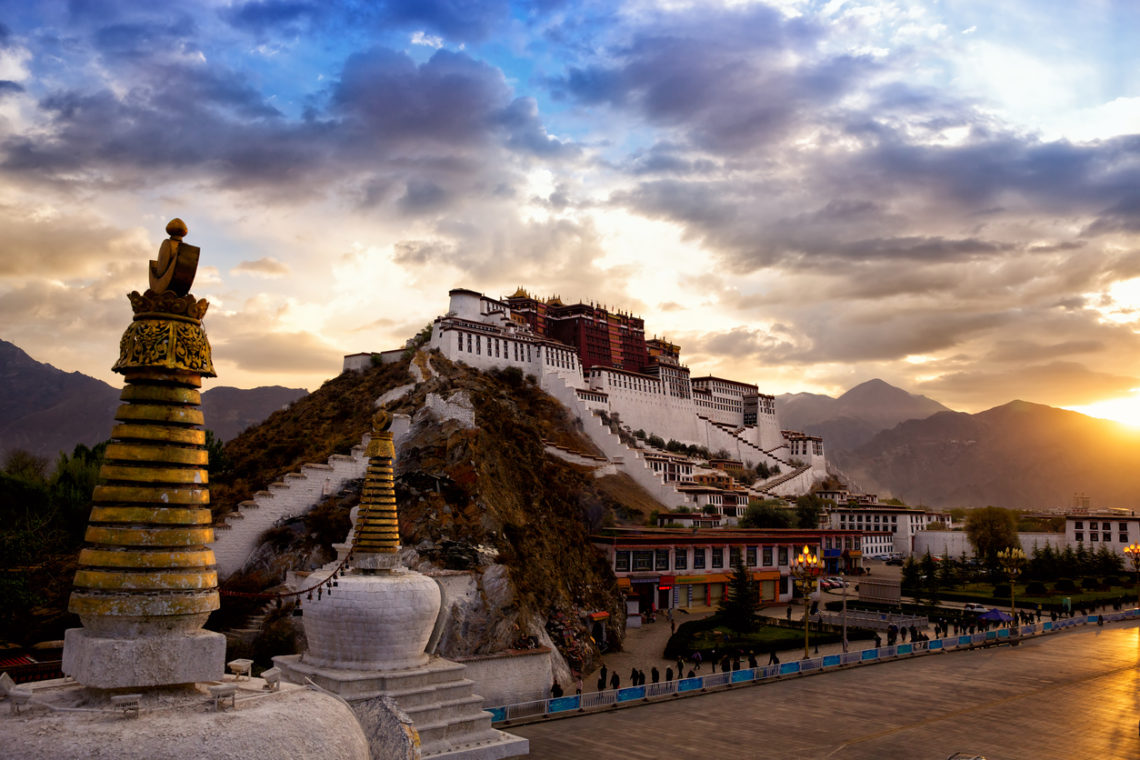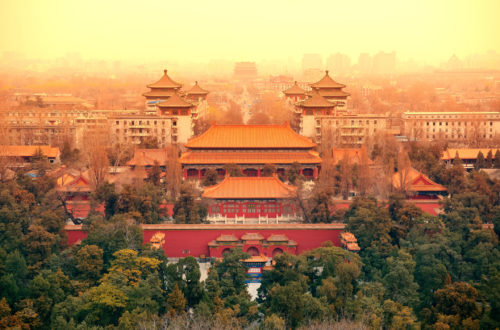I was beginning to feel like I was trapped inside a Kafkan novel. Trying to get my head around the different layers of bureaucracy; feeling like I was making progress, but never really getting anywhere – there was even a castle of sorts sitting atop a hill in the centre of the city. Had the Bohemian drawn inspiration from this very place, I playfully began to wonder? I had been in Lhasa for almost a week now, and having finally managed to get my papers in order with regards the accommodation, I was now looking to make my way westwards again towards the Nepalese border.
My week here, in the meantime, had been fantastic. I had of course taken a tour around the many rooms of the Potala Palace, yet it was the Jokhang temple – considered by the Tibetans to be the most sacred in all of Tibet, that really moved me. My accommodation lay just off from Barkhor Square, where the temple is situated, and so each day I would spend some time here soaking up the atmosphere or watching the day go by. Commercialisation of the area in the name of tourism was already in full swing, but it was still of a rather low-key kind, and one felt that it had still retained something of its original character and identity, despite the vast changes that the city was undergoing.
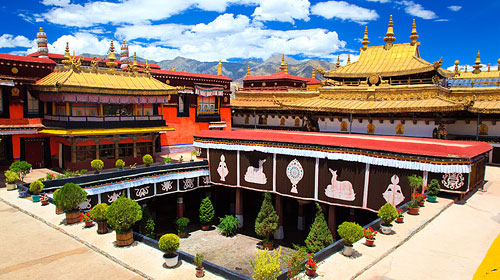
In between the myriad stalls selling trinkets to tourists and pilgrims alike, large wheels of yak butter stood on display, while Tibetan Buddhists – many of whom had likely travelled from the far reaches of the region – conducted prostrations in the square outside the temple. And all the time, the smell of burning juniper filled the air, adding to the otherworldliness of the whole experience. In retrospect, it is difficult to know how much of what I saw was genuine and how much was put on for show, but I nonetheless feel grateful to have had the opportunity to get a brief glimpse into the Tibetan culture when I did.
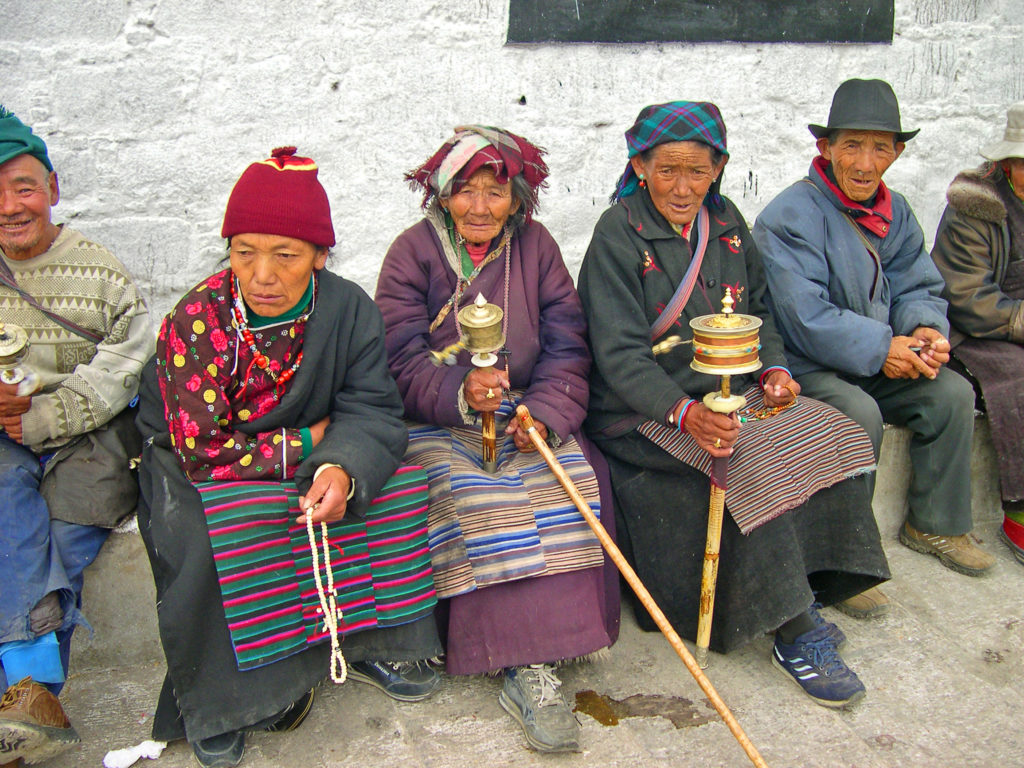
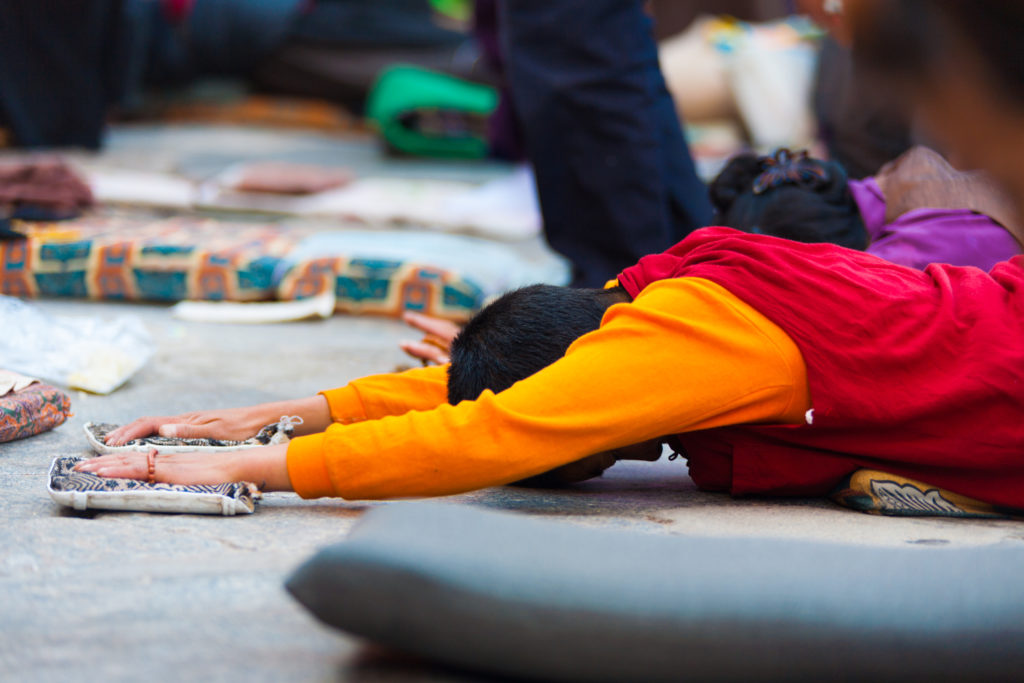
I was lucky enough to meet and speak with several Tibetans during my stay here. I was joined by a group of local teachers while drinking butter tea in a cafe, and we had a pleasant conversation during which they related to me some of their own knowledge of the city, along with the frustrations that they experienced in their profession. Another afternoon was spent drinking beers with an ethnic Tibetan man – himself a tourist from Sichuan province – during which we chatted away despite not knowing a single word of each other’s languages.
The clock, however, was ticking, and it was getting time to move on. Very little public transport operated in the direction that I was travelling, and so the only real option was to hire a land cruiser along with the obligatory driver and guide, and drive privately across the plateau and over the Himalaya. Such a trip did not come cheap however, and I was afraid that my budget would not stretch that far, not to mention the seemingly profligate nature of undertaking such a tour for a single traveller.
Chance however led me to meet up with an Australian family back at my hostel, who found themselves in a similar predicament, and who agreed to share the price of the travel with me. All of us keen to be moving on, we agreed to set off the next day, leaving Lhasa behind and heading deeper into the Tibetan plateau.
***
The ride across the plateau was an experience I will never forget. At times the “road” seemed to disappear altogether as we found ourselves driving across a deserted landscape – if it hadn’t been for the odd yak that we would spot along the side of the road, living off whatever sparse vegetation it could find, one could be forgiven for thinking they were travelling across the surface of Mars. It quickly became clear why we needed an experienced driver for this journey.
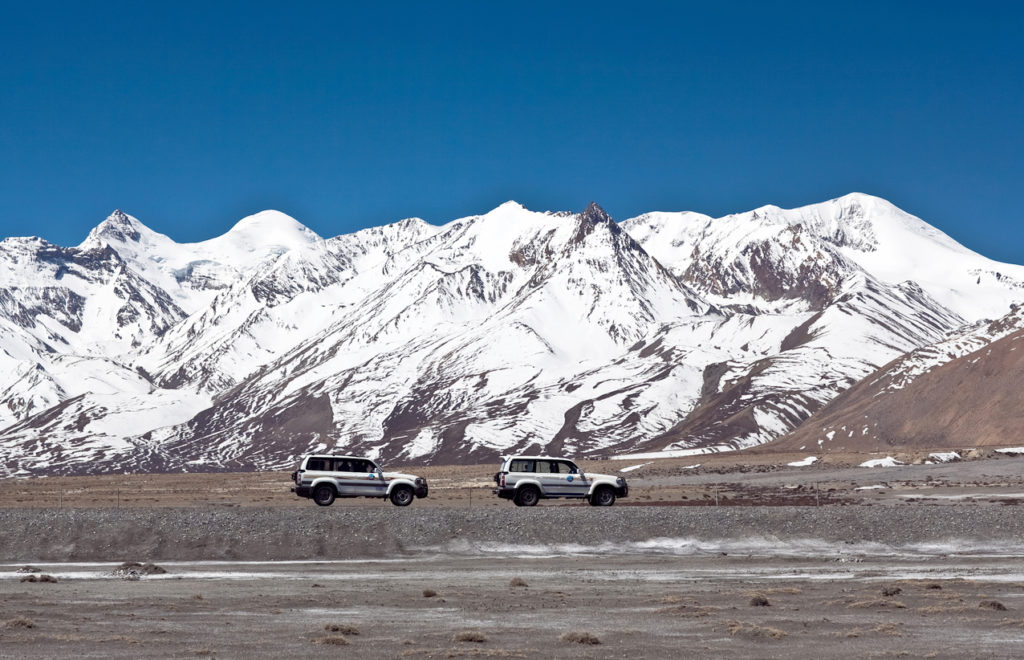
Our guide, meanwhile, gave us the “official” version of the history of the region, while at the various stops we got the chance to speak with locals who often gave us a very different perspective. First stop was Shigatse, the second largest city in Tibet, with an impressive history of its own. Some commotion had occurred at the monastery earlier in the day, prompting a strong military presence there, and so our planned visit was replaced with an evening drinking beers in the park with some local Tibetans.
As we continued on our journey, the landscape offered up yet more surprises. We briefly stopped near a mountain lake, the still waters of which shone such a clear turquoise hue as to appear almost unreal. As we drew nearer to the Himalaya, we passed massive snow-covered peaks, rising up from the plateau, until, about half-way through our journey, we arrived at Everest base camp.
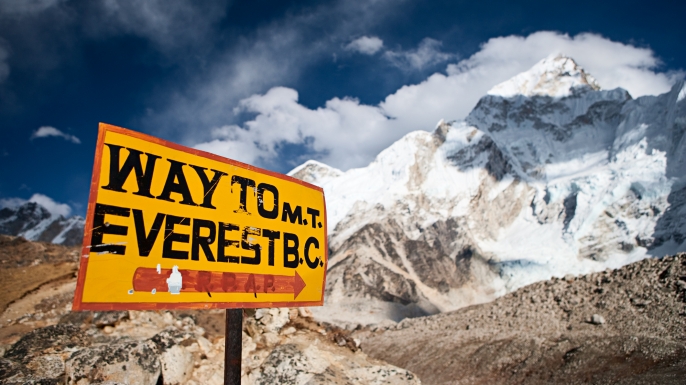
Or should I say, the tourist Everest base camp. The real one was a short hike further up the mountain, whereas we would stay in one of several tents, specially designed to provide guests like ourselves with board and lodging. We took a walk to base camp, in the hope of catching a glimpse of the planet’s highest peak, but it seemed that on this day the weather wasn’t going to cooperate. A little disappointed, we trekked back, ate some dinner, and began to settle in for the night.
It was around dusk that we heard some commotion outside. We raced out of our tent, and saw a group of people all staring south towards the horizon. The clouds had parted, in the last minutes of light that we would get for the day, giving us a glimpse of Everest standing there in its majesty. Visiting Everest had never been a part of my plan – I was more intrigued by the Tibetans’ holy Mount Kailash, but standing here on top of the world, looking up at the mountain in the dim twilight, I had to admit that it was a sight to behold.
And so, having thanked our hosts and our good fortune, we set off on the last part of our journey, the ascent up and over the Himalaya and down into Nepal. The barren rock became increasingly covered in snow, as our vehicle ascended higher and higher between the Himalaya’s frozen peaks. As spectacular as the scenery was, time was sadly not on our side, and our driver seemed to step it up a gear to get us to the border crossing before it closed for the evening.
And then, almost like flicking a switch, everything changed. We had begun our descent, and our vehicle traced the curving roads that led down into a mountain valley. The frozen ice had here turned to waterfalls, cascading down the mountainside in glorious streams, and giving life, in turn, to the lushest of greenery. The stark contrast to the barren landscape in which we had spent the past two weeks made it seem almost like a tropical paradise, the greens interspersed with the myriad colours of flowers and animal life.
We approached the border town Zhangmu with little time to spare, and our driver, clearly familiar with the route, navigated his way through it with ease, and not a little speed. Finally reaching the border, we had little time to say thank you and goodbye, before we had been whisked off to the gates. We had made it, and it wasn’t until we were through customs and found ourselves walking across the Friendship Bridge that spans the Sun Kosi river, finally stepping into Nepal on the other side of the valley, that it began to sink in.
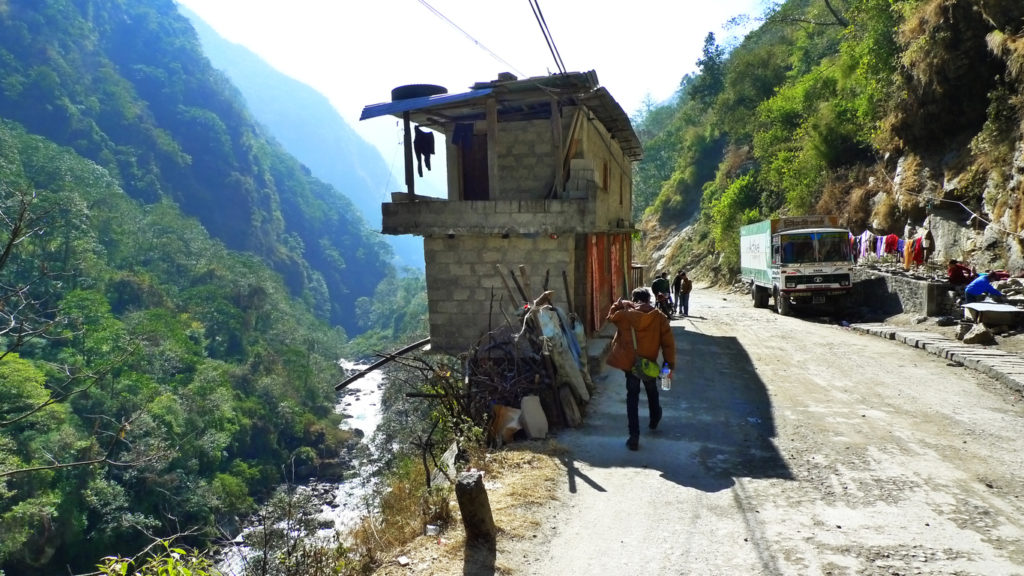
Wandering down the street of Kodari, the border town on the Nepalese side of the river, we sought out accommodation for the night and a place to eat. We would need some time to adjust to the new country and culture, not to mention the shift in altitude. Tomorrow awaits a colourful bus-top journey down through the valley, past Nepalese villages and finally on to Kathmandu.
